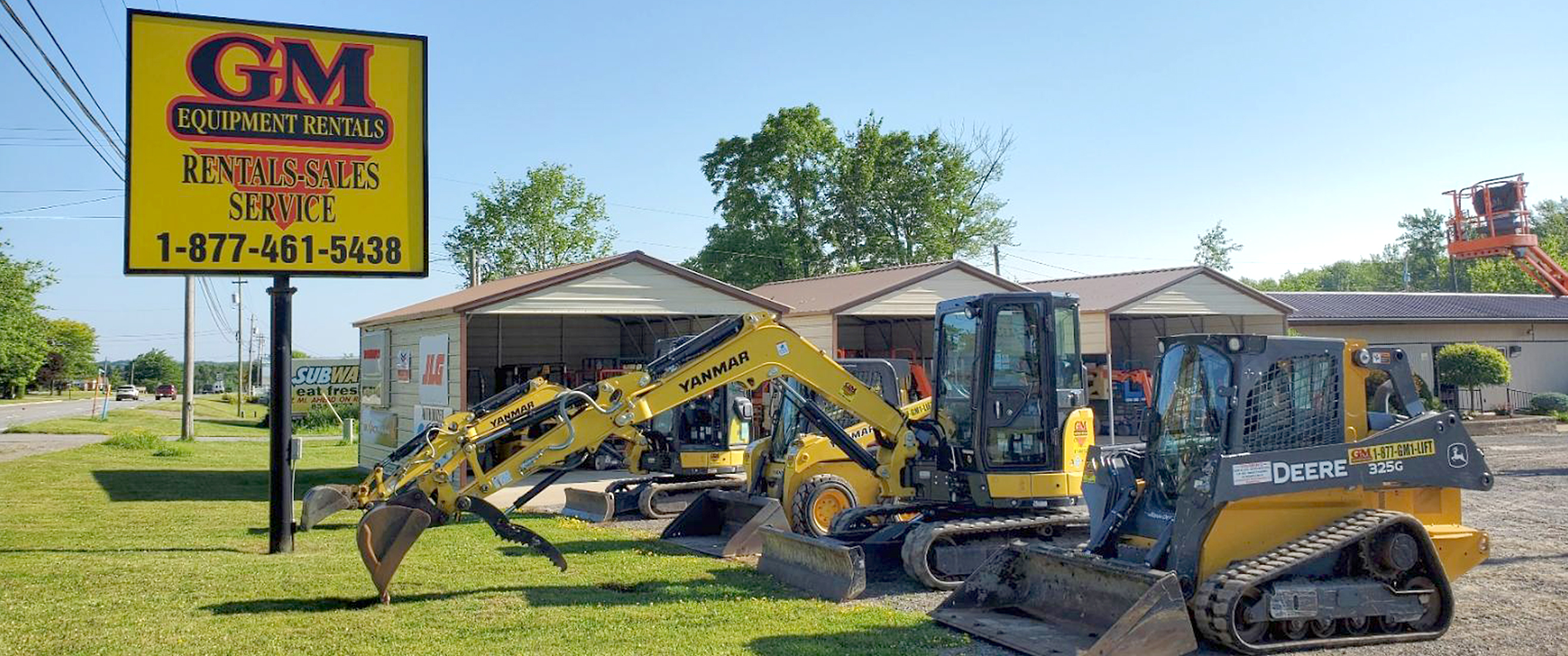WE TRANSFORM BUSINESS NEEDS INTO SOLUTIONS THAT GROW WITH YOUR BUSINESS.
Ask the Expert: 5 Things Business Owners Need to Know About the Global Semiconductor Chip Shortage
Because of the shutdown, fleet orders for the 2021 model year have been cut-off much earlier than normal, and as a result, businesses that are currently looking to replace or add vehicles to their fleets may have noticed that it’s becoming increasingly difficult to do so.
![]()
Modern-day automotive vehicles are relying on advanced technology more than ever to deliver an exceptional driving experience coupled with innovative safety and mobility features. But there’s currently an unprecedented global shortage of an integral part to these vehicles — semiconductor chips — that also impacts nearly every industry, from automotive to consumer tech, and many more in between. While this shortage has affected consumers, it’s also affecting businesses as they are unable to access new fleet vehicles until supply bounces back.
Below, we’ve answered five of the top questions business owners and fleet managers may have regarding this shortage:
1. What is a semiconductor chip, and how critical is it?
Semiconductor chips are critical parts for cars and trucks, especially as models continue to evolve. Older cars were more mechanical, but now, newer cars rely on more advanced technology and can require hundreds of chips for features like anti-lock brakes, “infotainment” systems, backup cameras, and even the electronic power steering, among many others.
As the auto industry continues to advance, so will the necessity of these chips. While a traditional gasoline-powered vehicle could require a dozen chips for its engine alone, a hybrid electric vehicle could contain up to 3,500 semiconductors.1 And although pure electric vehicle sales currently only make up approximately 2.5% of total global sales,2 as electric vehicles continue to gain popularity, the industry’s reliance on these semiconductors will also likely increase.
Though semiconductor chips are small in size, their impact is rather massive. With few exceptions, a car that requires one or more chips cannot be driven if they are not present. The large-scale shortage of semiconductor chips means manufacturers can only produce a limited number of vehicles, therefore dealers have a significantly reduced supply, and consumers are struggling to find the new vehicles they need.
2. Are semiconductor chips only used in cars and trucks?
Semiconductor chips are heavily present in many other products and industries aside from automotive, including in retail tech products such as laptops, computer monitors, tablets, and phones.
These chips are in extremely high demand, and according to the Semiconductor Industry Association, global chip sales are expected to grow 8.4% in 2021 from $433 billion in 2020.3 While a rise in sales is good for chip manufacturers, it is bittersweet for other industries looking to secure the chips necessary to manufacture and sell their products. The current disruption to the global supply chain could stunt the projected growth, but any growth in the industry could also further exacerbate the current shortage.
3. How did we get here?
The U.S. produced semiconductor chips domestically many years ago, but began to import them from overseas to cut down on production and shipping costs. At the beginning of the pandemic, many automotive and parts manufacturers halted production, sending ripples throughout the global supply chain. When one company in the supply chain closes, even temporarily, it can significantly impact the entire supply chain, and one single missing chip can shut down the entire production line of a vehicle.
Due to the nature of the pandemic and resulting stay-at-home orders last year, parts manufacturers — including those who manufacture semiconductor chips — prepared for a possible prolonged automotive shutdown and adjusted operations accordingly. Facing this, along with the decreased demand for automotive vehicles early on in the pandemic, semiconductor chip manufacturers pivoted to meet the influx of demand for consumer electronics as millions of workers shifted to working from home. These chip suppliers changed direction to meet the demand for laptops, monitors, and desktop printers and scanners, as well as other work-from-home tech essentials.
The bottleneck that has led to the current shortage emerged when demand in the auto industry bounced back much quicker than initially anticipated. Chip manufacturers found themselves scrambling to produce enough to meet the demand once new vehicle orders started piling up in tandem with the continued rising demand for consumer electronics. In fact, in 2020, the consumer electronics industry saw nearly $442 billion in retail sales revenue, making it the biggest year for sales on record.4
Additionally, a recent electrical fire at a Renesas Electronics, a chip plant that manufactures semiconductors, has further exacerbated the issue. Renesas makes up approximately 30% of the global market for chips and has said it will take at least one month to resume production.5 To further put the road to recovery in perspective, it takes, on average, 26 weeks to produce one single chip, as its manufacturing process is rather complex.6
Although the auto industry used to source these parts domestically, production shifted overseas to lower expenses, but the recent shifts in demand and supply over the past year have prompted the industry to rethink that decision.
4. What does this mean for my business, and how can I ensure business continuity despite this shortage?
Because of the shutdown, fleet orders for the 2021 model year have been cut-off much earlier than normal, and as a result, businesses that are currently looking to replace or add vehicles to their fleets may have noticed that it’s becoming increasingly difficult to do so.
Here are a few different options for how fleet managers can obtain the necessary vehicle to maintain business operations:
- Option 1:Lease a vehicle that is already in stock.
If a business selects a vehicle that is already in local dealer inventory, they can take delivery right away, but it may not have the various features or upfitting options that would normally be available and may be more expensive, in some cases much more expensive, due to limited supply and high demand. - Option 2: Wait until the 2022 model year.
If a business selects a vehicle that is already in local dealer inventory, they can take delivery right away, but it may not have the various features or upfitting options that would normally be available and may be more expensive, in some cases much more expensive, due to limited supply and high demand.
If managers decide to wait, they’ll need to extend the service life of the existing vehicle(s) until the shortage has been resolved; and they should do any necessary maintenance now to ensure the vehicle(s) will be able to continue running safely, enabling drivers to meet increasing consumer demand. - Option 3: Consider leasing a different make or model.
If the desired vehicle isn’t in stock and it isn’t feasible to wait for the 2022 models, managers should consider leasing different makes or models. Business owners and fleet managers alike should keep in mind that due to pent-up demand and short supplies, auto dealerships are likely to prioritize more profitable retail customers, which means business fleets may not have the same access to stock units as the average car buyer.
Before making a firm decision, fleet managers should do a thorough cost-benefit analysis to see what the smartest move is from a financial standpoint.
5. When will this shortage end?
Unfortunately, this shortage won’t be resolved anytime soon, as even the slightest ripple in the supply chain can have serious ramifications across multiple industries. There are projections that this shortage will continue through Q3 of 2021, but it’s difficult to pinpoint when an issue like this could be resolved, as this anticipated end date is barring any other future disruptions to the supply chain that could set the industry back even farther.
In an effort to maintain workflow, some auto manufacturers are currently building vehicles with everything but the chips and keeping them in storage yards. Once the shortage has subsided, they will then be able to install the chips and ship the vehicles. Business owners should consult a fleet management partner if they haven’t already. Having a dependable partner like The Bancorp to help navigate the situation and share updates on the latest developments in the shortage can alleviate some of the pressure business owners may be feeling.
1. U.S. International Trade Commission (USITC), May 2019.
2. Ev-volumes.com: Light Vehicle Sales Forecast, May 2020, IHS Markit.
3. Semiconductor Industry Association (SIA), November 2020.
4. Consumer Tech Association (CTA): U.S. Consumer Technology Sales and Forecasts, January 2020.
5. Reuters, March 2021.
6. Semiconductor Industry Association (SIA), February 2021.
Opinions, findings, or perspectives contained in this blog are those of the authors.
Blog
The Bancorp
Commercial Lending
Leasing
Commercial Fleet Leasing
Vehicles
Semiconductor
Chip Shortage
Business Owners









